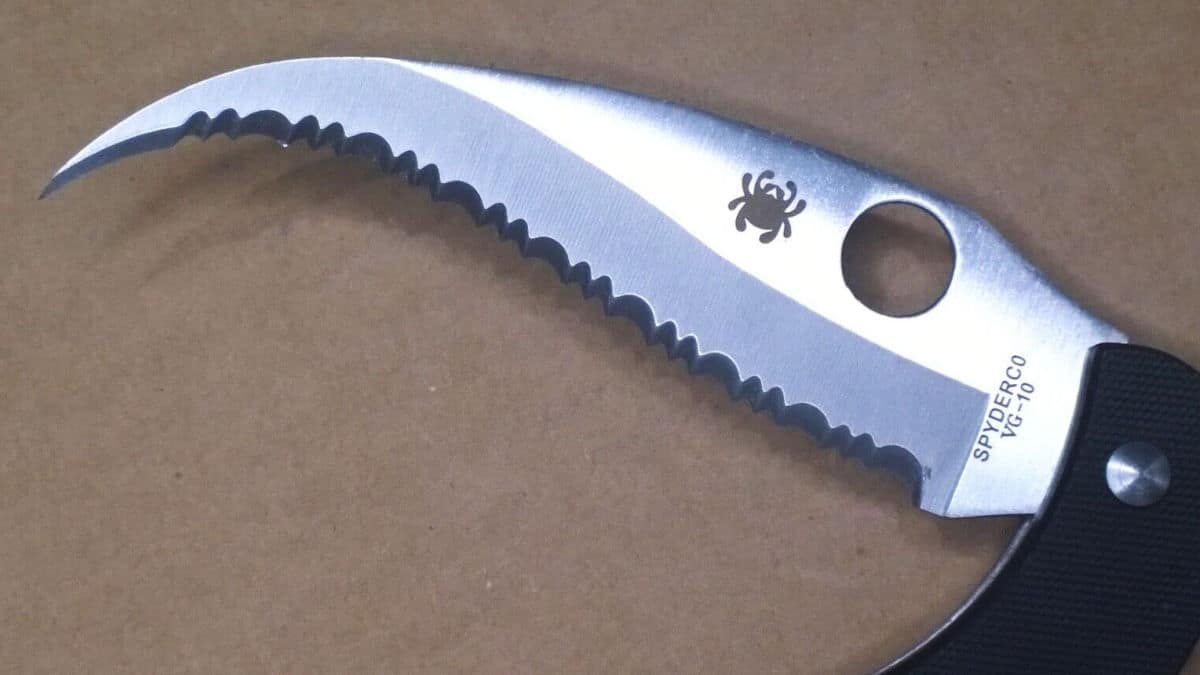When you visit a merchant by clicking a link on this site we may make a commission on anything you buy (at no additional cost to you). Affiliate programs and affiliations include, but are not limited to Amazon Associates and the eBay Partner Network.”
When discussing the world of knives, one particular type raises more concerns and faces more restrictions than all others. The ballistic knife, often considered to be the most illegal knife in the United States, is banned due to the potential danger and misuse that comes with its unique design and function. While other knives like switchblades and gravity knives have seen loosening restrictions in recent years, the ballistic knife remains highly scrutinized and heavily regulated across the country.
The origin of the ballistic knife can be traced back to the Soviet Union, where it was initially designed for military use. This knife’s primary feature is its ability to forcibly launch its blade toward a target using a spring-loaded mechanism or pressurized gas, making it both a tool for close combat and a ranged weapon. As its popularity grew and the knife became more widely available, concerns surrounding its potential for criminal use led to the establishment of strict regulations, making the ballistic knife one of the most banned items in the nation.
Understanding the legal ramifications and restrictions connected to the possession, use, and sale of ballistic knives is essential for anyone interested in knives or collecting unique weapons. While most pocket knives and multi-tools are generally legal as long as their blades measure less than 2.5 to 3 inches, the ballistic knife continues to face the most substantial restrictions and remains a highly controversial item.
Most Illegal Knives in the United States
In the United States, knife laws vary across states, and some types of knives are deemed illegal or more restricted due to their dangerous nature. This section explores the most illegal knives, focusing on four specific types: Switchblades, Ballistic Knives, Butterfly Knives, and Gravity Knives.
Switchblades
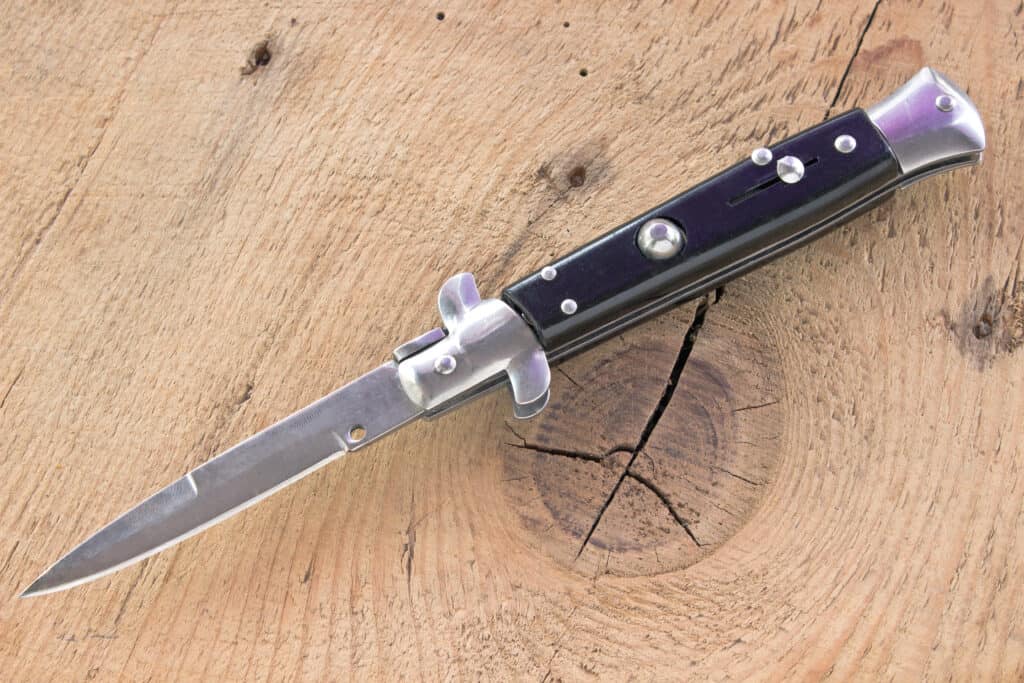
Switchblades, also known as automatic knives, are characterized by a blade that opens automatically upon activation of a button, switch, or other mechanisms. The Switchblade Knife Act of 1958 made it illegal to manufacture, possess, transport, or sell switchblades in interstate commerce. Some states, like Delaware and California, have strict regulations regarding switchblades, defining them based on their blade length and mechanisms. However, several other states have recently eased their switchblade laws, allowing for legal ownership and carry of these knives under certain conditions.
Ballistic Knives
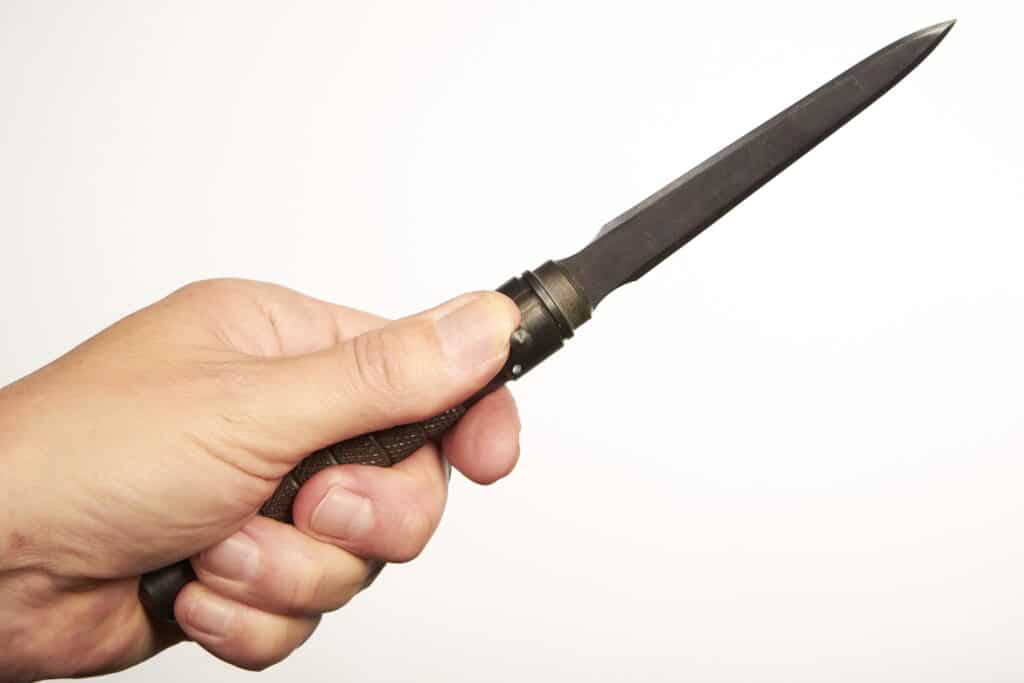
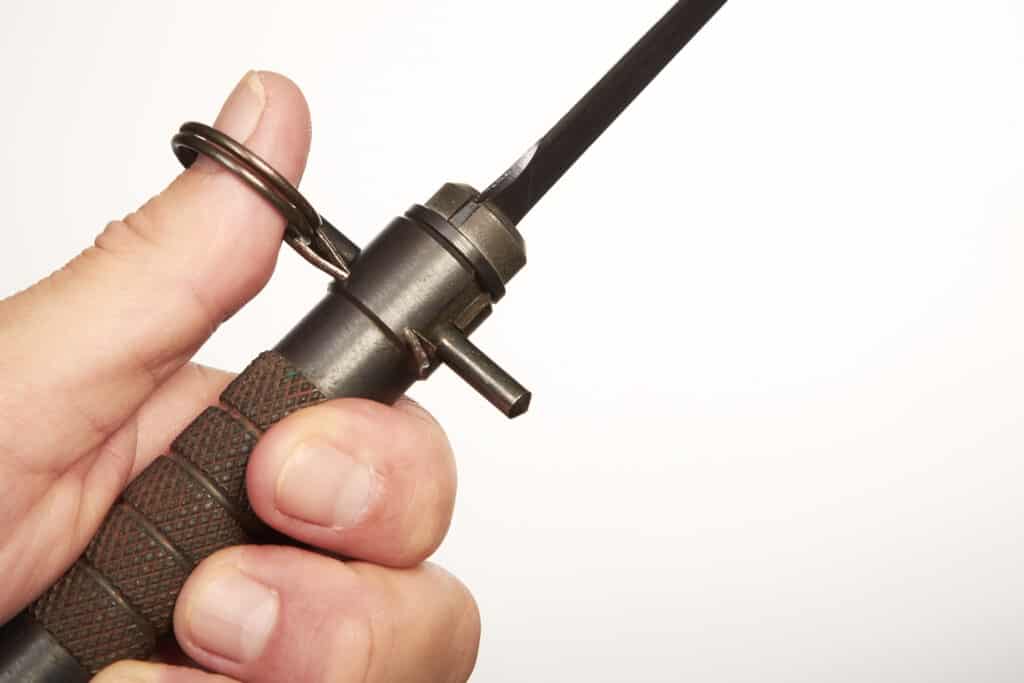
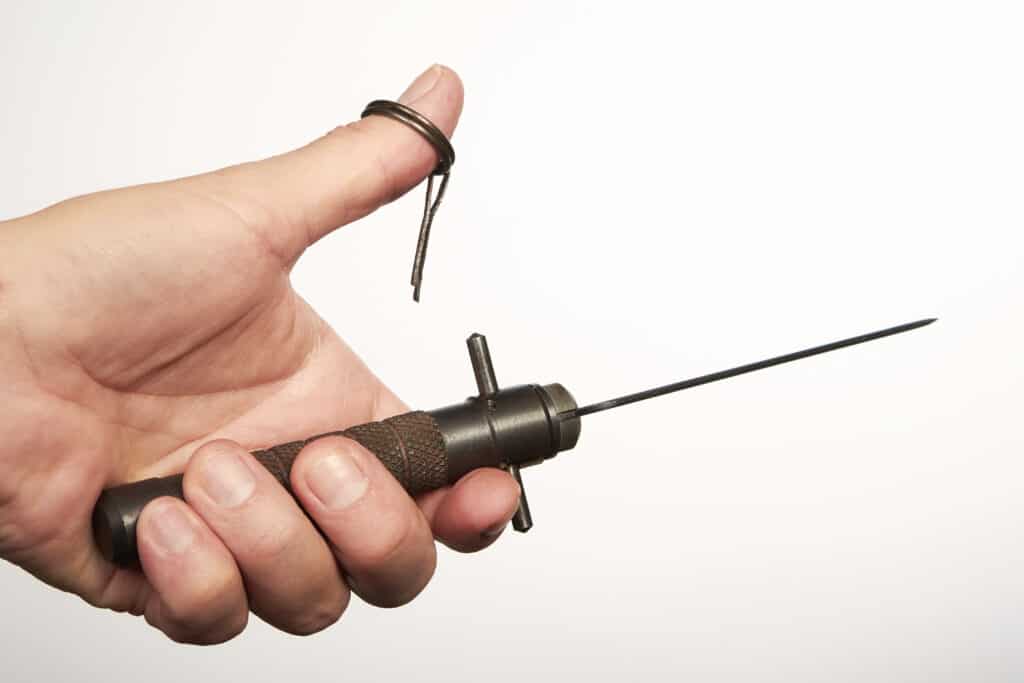
The ballistic knife is considered the most illegal knife in the United States. This knife features a detachable blade propelled by a spring-operated mechanism. Federal law prohibits the possession, manufacture, and distribution of ballistic knives, and most states have followed suit with their laws. Ballistic knives are considered highly dangerous due to their ability to launch blades at high speeds, making them a potent weapon.
Butterfly Knives
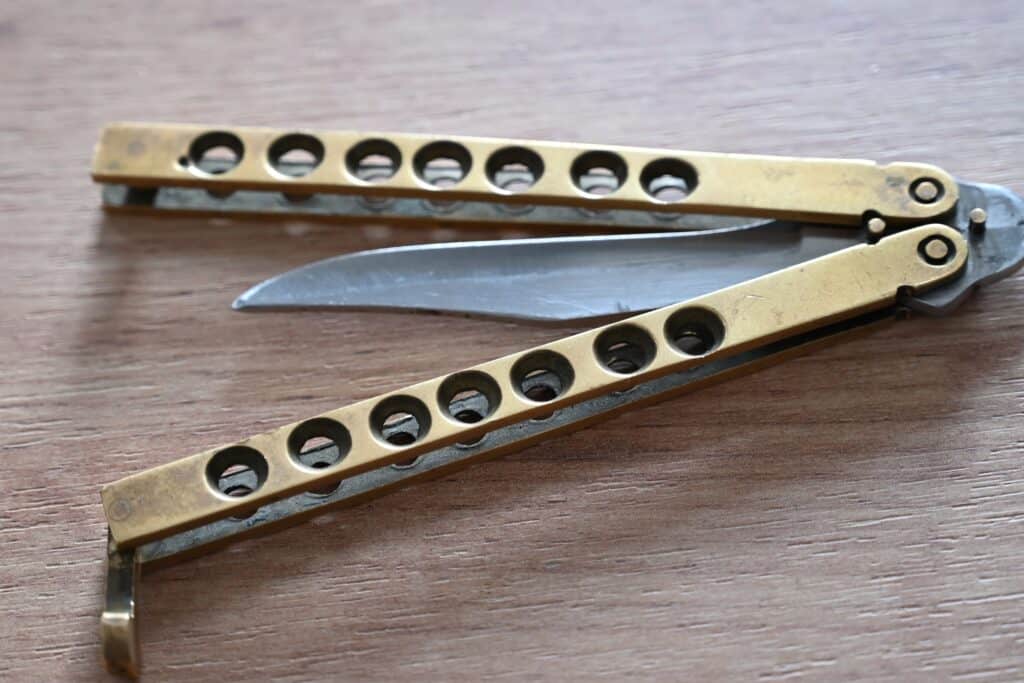
Butterfly knives, also known as balisongs, consist of two handles that rotate around a central pivot, allowing the user to deploy the blade by flipping the handles open. Some states have banned the possession and carry of butterfly knives, categorizing them alongside other dangerous weapons such as daggers, throwing stars, and stilettos. However, in other states, butterfly knives are considered folding knives and may be legal to own and carry, subject to specific regulations and restrictions.
Gravity Knives
Gravity knives are similar to switchblades in their opening mechanism, as they rely on the force of gravity to release and deploy the blade. In many jurisdictions, gravity knives are illegal, subject to the same regulations as switchblades and other dangerous weapons. However, some states have modified their knife laws in recent years to exclude gravity knives, recognizing that these knives are often used as utility tools rather than weapons.
While owning a knife may be legal in many states, it is essential to understand the specific knife laws governing the possession, carry, and use of different types of knives, as well as the restrictions and regulations for each state. In some cases, additional rules apply for carrying knives in schools, on planes, in federal districts, and on military bases.
State-Specific Knife Laws
California Knife Laws
In California, knives such as switchblades, butterfly knives, and ballistic knives are considered illegal. The blade length also plays a significant role in determining legality. California law prohibits carrying knives with blades over 4 inches long in most public buildings and over 2.5 inches long on school campuses. Pocket knives and folding knives are generally legal, provided they adhere to the blade length restrictions.
Arizona Knife Laws
Arizona has relatively relaxed knife laws. There are no specific restrictions on the blade length or type of knife one can carry, concealed or open. However, it is always essential to exercise caution and common sense, especially in locations with metal detectors, such as courts or airports. It is essential to remember that individual cities may have additional regulations, so it is crucial to refer to state and local laws before carrying an unfamiliar knife.
Arkansas Knife Laws
Arkansas has removed many knife restrictions in recent years, making it one of the more lenient states. However, carrying any knife with the intent to use it unlawfully against another person is illegal. While there are no specific restrictions on blade lengths, knives such as switchblades or ballistic knives may still be subject to regulation. Throwing stars and other similar weapon-like tools are also considered illegal.
Colorado Knife Laws
Colorado knife laws have specific restrictions on certain types of knives. Gravity knives, switchblades, and ballistic knives are all illegal. Moreover, the state prohibits carrying concealed knives with blades longer than 3.5 inches, such as dirks, daggers, or stilettos. Pocket knives and multi-tools with blades under 3.5 inches are generally considered legal to carry.
Connecticut Knife Laws
Connecticut has stringent knife laws, with switchblades, stilettos, and dirks being illegal. Any knife with a blade length over 1.5 inches is illegal if carried on school grounds. Fines and penalties may apply to those found with dangerous or illegal knives. It is essential to remain vigilant of these restrictions, as they may vary in locations like courts, planes, or other special buildings.
Delaware Knife Laws
Delaware knife laws focus primarily on the blade length and location where the knife is carried. The state prohibits carrying concealed knives with blades longer than 3 inches, as well as switchblades and brass knuckles. In addition, schools, government buildings, and other specific locations often have more stringent restrictions, and it is crucial to remain aware of the local laws in these areas.
Each state has its distinct knife laws, and it is crucial to research the rules and regulations of the state you reside in or plan to visit. These state-specific laws cover various types of knives, including automatic knives, folding knives, and weaponry like throwing stars. To avoid legal complications, it’s essential to stay knowledgeable, cautious, and respectful of each location’s knife laws.
Legal Consequences and Enforcement
When discussing the legal consequences and enforcement of knife laws in the United States, it is essential to cover various types of knives, including switchblades, butterfly knives, gravity knives, and ballistic knives. These knives are often considered dangerous and may be subject to different regulations depending on the blade length, state, and location. This section will provide information regarding the fines and penalties associated with illegal knife possession and law enforcement perspectives on the matter.
Fines and Penalties
Violating knife laws can result in fines, penalties, and even imprisonment in some instances. The severity of the punishments varies depending on the state and the specific type of knife involved. For example, in California, carrying a switchblade with a blade longer than 2 inches is illegal and may result in a fine up to $1,000 or imprisonment for up to six months.
In addition to switchblades, other prohibited knives include ballistic knives, daggers, dirks, stilettos, and disguised knives such as sword canes. Possessing or carrying these illegal knives may also result in substantial fines and jail time. In some states, carrying a knife onto school grounds or other restricted areas like airports can also lead to severe consequences.
Law Enforcement Perspectives
Law enforcement agencies seek to protect public safety and uphold state and federal laws relating to knives. In enforcing these laws, officers may confiscate illegal knives, impose fines, or make arrests depending on the situation.
In some cases, law-abiding citizens may unintentionally break the law due to the complex and sometimes vague nature of knife regulations. This complexity often varies from state to state, with some like Arizona and Arkansas having relatively relaxed regulations, while others such as Delaware and Connecticut impose stricter controls.
To comply with the law and avoid potential penalties, individuals should be aware of the specific knife laws in their state and any locations they plan on traveling to. This includes understanding restrictions on blade length, the legality of concealed or open carry, and areas where possessing a knife is forbidden.
State laws may differ significantly when it comes to knives like utility knives, Swiss Army knives, and multi-tools, which are generally considered legal, but it is important to verify the rules in your jurisdiction and be aware of any applicable federal laws or regulations, such as the Switchblade Knife Act of 1958.
In conclusion, both fines and penalties, as well as law enforcement perspectives, must be taken into account when discussing the legal consequences of knife possession and use in the United States. By understanding the nuances of knife laws and remaining informed about any changes or updates, individuals can ensure they are abiding by the rules and maintaining public safety.
Do Sheepsfoot Blades Have A Purpose? (Cuz They’re Ugly…)
Spetsnaz Machetes – Blades Of The Russian Special Forces
What Is The Actual Purpose Of A Spear Point Knife Blade?
CRKT CEO Review – Coolest, Most Worthless Knife Ever?
How Sharp Is A Scalpel? (Is It Sharper Than A Razor?)
Can You Shave With A Knife? (Yes, Here’s How)
When you visit a merchant by clicking a link on this site we may make a commission on anything you buy (at no additional cost to you). Affiliate programs and affiliations include, but are not limited to Amazon Associates and the eBay Partner Network.”

